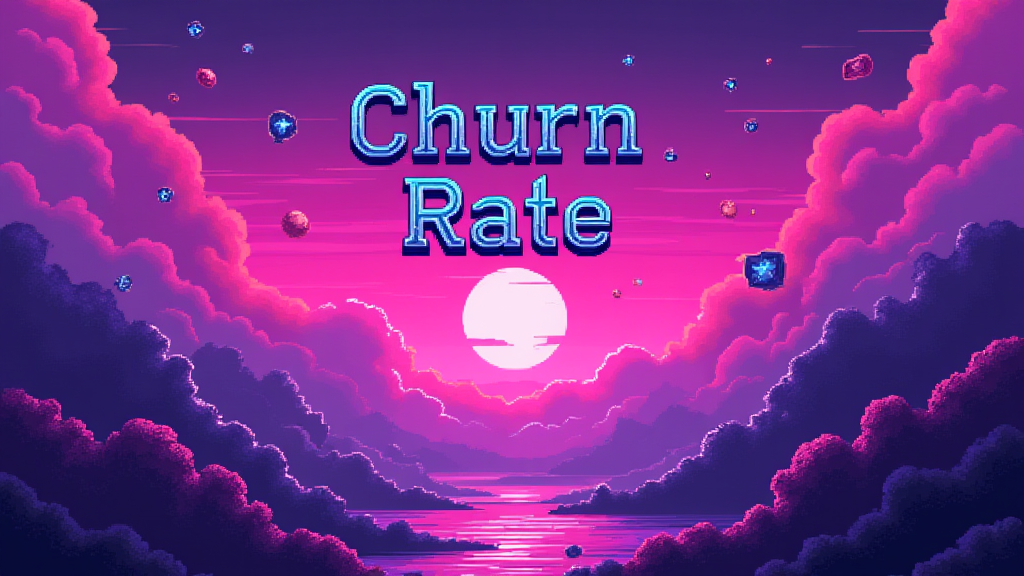Churn Rate: Key Metric for Customer Retention

Published on: October 01, 2024
In the world of Sales Operations, Marketing Operations, and Revenue Operations, understanding and managing customer churn is crucial for sustainable business growth. At the heart of this concept lies the churn rate, a vital metric that measures the percentage of customers who stop using a company's products or services within a given time frame. For a deeper dive, check out this churn rate overview.
What is Churn Rate? 📉
Churn rate, also known as attrition rate, is the percentage of customers who discontinue their relationship with a company during a specific period. It's a key indicator of customer satisfaction, product value, and overall business health.
The Churn Rate Formula
The basic formula for calculating churn rate is:
$$\text{Churn Rate} = \frac{\text{Number of Churned Customers}}} \times 100\%$$
Why is Churn Rate Important? 🎯
Understanding and managing churn rate is critical for several reasons:
- Revenue Impact: High churn rates directly affect recurring revenue and can hinder growth.
- Customer Lifetime Value: Lower churn rates typically lead to higher customer lifetime value.
- Acquisition Costs: Retaining existing customers is often more cost-effective than acquiring new ones.
- Business Health Indicator: Churn rate can signal product issues, market changes, or competitive pressures.
Types of Churn Rate 🔄
Churn rate can be measured in various ways, depending on the business model and objectives:
| Type | Description |
|---|---|
| Customer Churn Rate | Percentage of customers lost |
| Revenue Churn Rate | Percentage of revenue lost from existing customers |
| Gross Churn Rate | Total loss without accounting for upgrades or expansion |
| Net Churn Rate | Churn rate that accounts for both lost and expanded revenue |
Strategies to Reduce Churn Rate 🛠️
Implementing effective strategies to reduce churn rate is essential for long-term success:
- Improve Onboarding: Ensure customers understand and derive value from your product quickly.
- Proactive Customer Support: Address issues before they lead to dissatisfaction.
- Regular Engagement: Keep in touch with customers through various channels.
- Gather and Act on Feedback: Continuously improve based on customer input.
- Offer Incentives: Provide loyalty programs or discounts for long-term commitments.
Common Misconceptions about Churn Rate 🤔
It's important to avoid these common pitfalls when analyzing churn rate:
- All Churn is Bad: Some level of churn is natural and can even be healthy for business evolution.
- One-Size-Fits-All Benchmark: Acceptable churn rates vary by industry, business model, and company stage.
- Ignoring Seasonality: Churn rates may fluctuate seasonally, requiring analysis over longer periods.
Churn Rate Analysis Best Practices 📊
To gain meaningful insights from churn rate analysis:
- Segment your customer base to identify high-risk groups
- Analyze churn patterns to predict and prevent future churn
- Compare churn rate with industry benchmarks
- Combine churn rate with other metrics like Customer Acquisition Cost (CAC) and Customer Lifetime Value (CLV)
Understanding and optimizing churn rate is an ongoing process that requires attention and adaptation. By focusing on this crucial metric, businesses can improve customer retention, boost revenue, and drive sustainable growth. For further insights, explore the importance of customer churn.
Questions to Consider for Your Business:
- What is our current churn rate, and how does it compare to industry standards?
- Which customer segments have the highest churn rates, and why?
- How can we improve our onboarding process to reduce early-stage churn?
- What feedback mechanisms can we implement to catch dissatisfaction early?
- How can we use predictive analytics to identify at-risk customers before they churn?

















